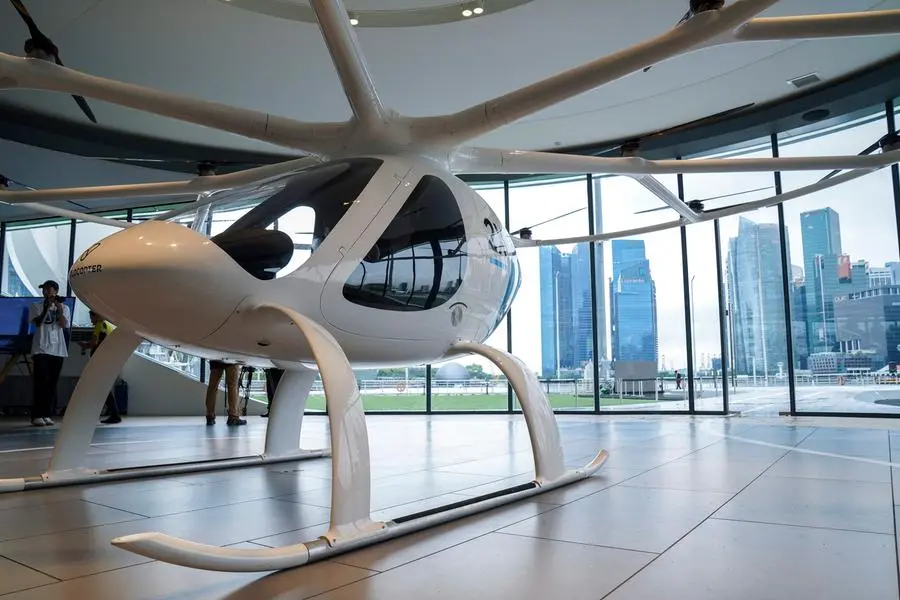PHOTO
Mecca, Kingdom of Saudi Arabia: In a historic move, Saudi Arabia has successfully conducted its first air taxi trial in Mecca, setting the stage for deployment in the coming years and transforming Hajj transportation for pilgrims.
Led by the General Authority of Civil Aviation (GACA), in collaboration with the Ministry of Transport and Logistics Services, the Ministry of Hajj, the Ministry of Interior, and Front End Limited Company, the trial featured an EH216-S pilotless eVTOL aircraft. Conducted in a low-risk area with protected airspace, this initiative is set to redefine the Hajj experience by enhancing mobility, reducing congestion, and promoting sustainability.
His Excellency Saleh Al-Jasser, Minister of Transport and Logistics Services, emphasized the trial's impact:
"This groundbreaking trial is a pivotal step towards a faster, more efficient, and sustainable Hajj travel. Saudi Arabia is leveraging pioneering technologies to empower pilgrims with a seamless and sustainable pilgrimage experience.”
The trial provides invaluable insights and technical data to support GACA’s development of an Advanced Air Mobility (AAM) Roadmap, including a robust regulatory framework tailored to provide safe and sustainable air transport solutions for Hajj pilgrims. By significantly reducing travel and delivery times, air taxis can accelerate the mobility of pilgrims and goods and improve emergency medical services during Hajj. AAM solutions are projected to support tens of thousands of pilgrims and generate tens of millions in revenue by 2030.
His Excellency Abdulaziz Al-Duailej, President of GACA, highlighted the trial's significance:
"This Air Taxi Trial marks a major advancement in integrating Advanced Air Mobility solutions into Saudi Arabia’s aviation landscape. GACA is committed to enabling new safe and sustainable forms of air transport, elevating travel for pilgrims and passengers across Saudi Arabia. This trial acts as a proof of concept for multiple use cases and contributes to the advancement of mobility solutions across the Kingdom.”
Mr. Majid Alghaslan, CEO of Front End, praised the collaboration:
"Front End is paving the way to a new era in smart mobility solutions, potentially revolutionizing Hajj transportation. Aligned with Saudi Vision 2030, our purpose is to foster a ‘Connected Kingdom,’ serving as a gateway for our partners to access growth opportunities in Saudi Arabia and the wider region. This achievement stands as a testament to the power of government-private partnerships in accelerating new technology adoption. Partnering with EHang made this pioneering solution a reality."
Saudi Arabia has invested hundreds of millions into AAM solutions to scale the sector, as the Saudi Aviation Strategy (SAS) transforms the Kingdom into the Middle East’s leading aviation hub by 2030. The strategy is unlocking more than $100 billion of investment, with passenger numbers growing by 26% in 2023 to 112 million. GACA hosted an AAM pavilion at the 2024 Future Aviation Forum in May, alongside an aviation investment showcase to enable investment in the aviation sector.
-Ends-
About AAM Roadmap Development in Saudi Arabia:
Advanced Air Mobility (AAM) is a developing form of aviation, eventually operating within a highly automated and collaborative environment, which will be enabled by various innovative technologies. This novel air transport system aims to move passengers and cargo and provide aerial services, improving intermodal transportation accessibility, safety, efficiency, sustainability, and quality of life. Since the launch of Vision 2030, the Kingdom has taken significant steps towards its future and society development, where the transport sector has been an essential element. Now, recent technology advancements can propel Saudi transport to new heights, fostering economic growth and resulting in multiple applications.
GACA has developed a comprehensive national roadmap for AAM with the collaboration of international experts. During the assessment phase, GACA cooperated with more than 60 stakeholders locally and globally to align and better understand the maturity level of such novel technology and identify the gaps and requirements to ensure safe deployment and efficient integration with traditional aviation systems and other modes of transportation. The roadmap identified the enablers of the AAM and the governance required during the roadmap's implementation phase. (for more about the roadmap, please feel free to review the report that GACA published on its website here




















